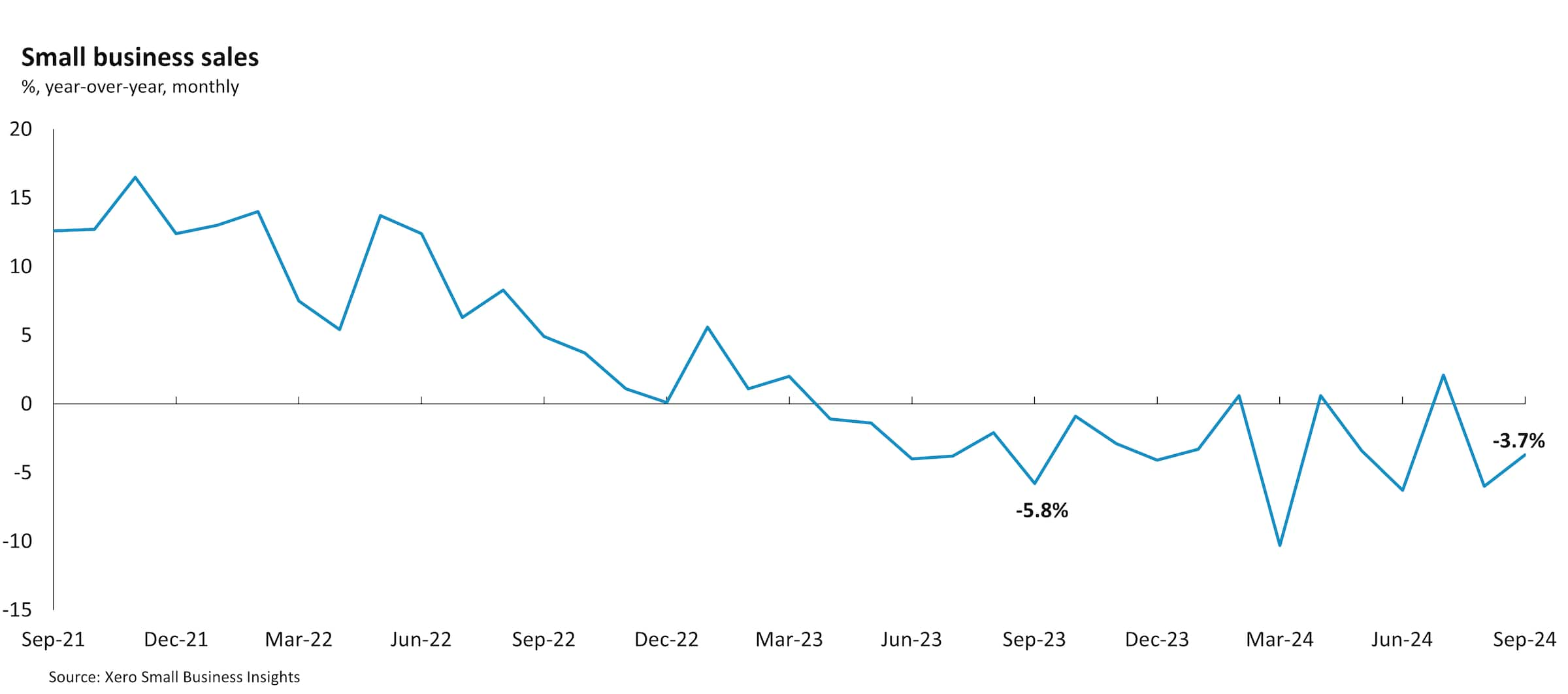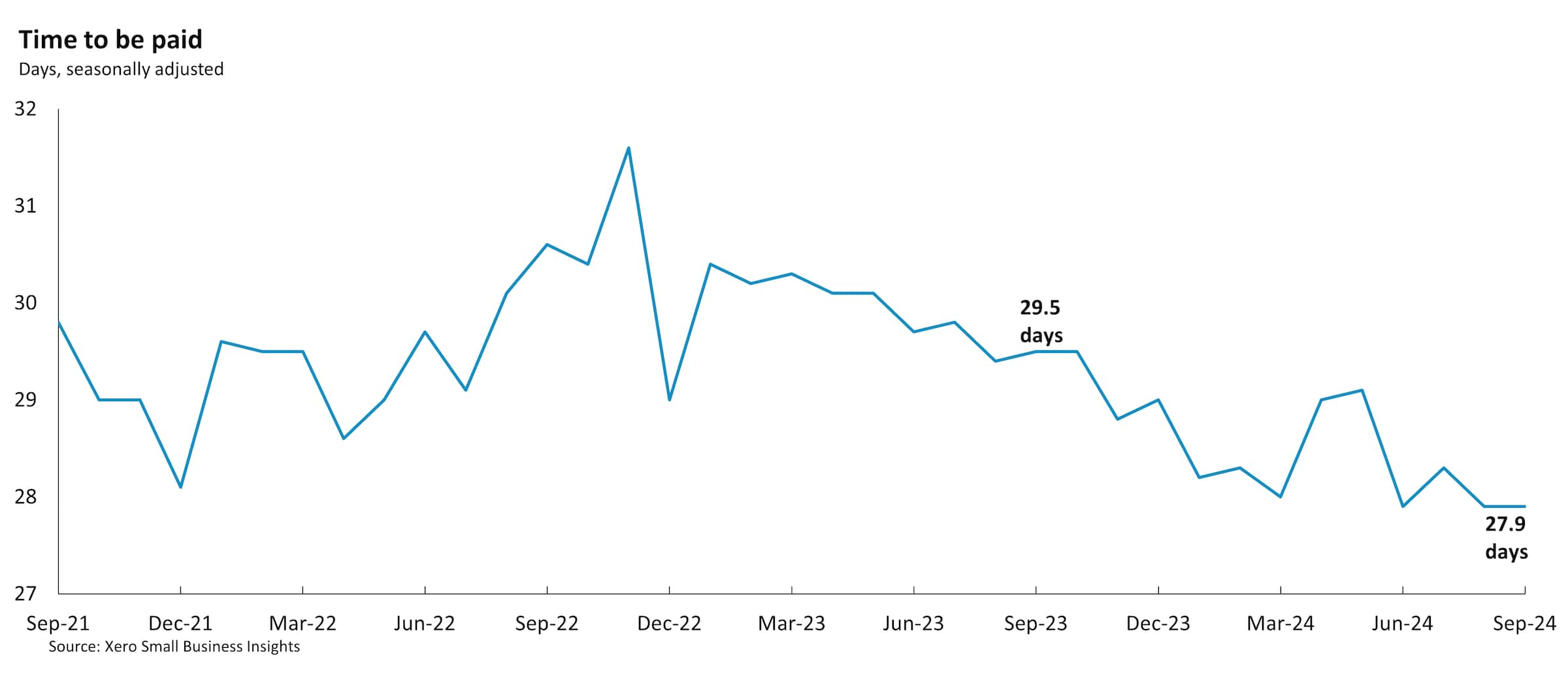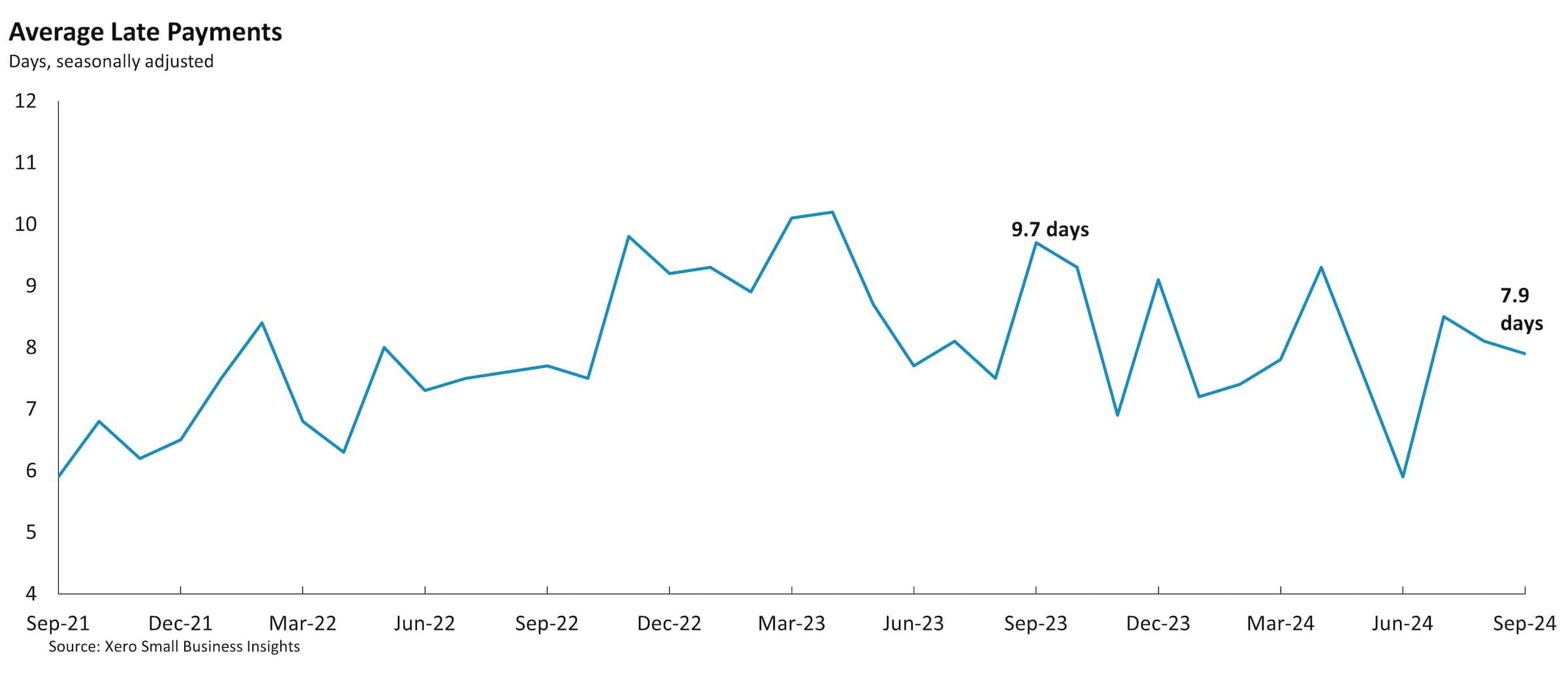Canada Small Business Insights
This analysis focuses on several core performance metrics, including sales growth, time to be paid, and late payments.


Sales still weak and payment times were mixed
Published: February 6, 2025
The latest Xero Small Business Insights (XSBI) data for Canada shows small businesses continued to struggle to make sales during the September quarter 2024. The payment times data was mixed. There was an improvement in the length of time between when an invoice was issued and when it was paid, but a deterioration in late payments.
Sales still lower than a year ago
The latest XSBI results show that Canadian small businesses had another tough quarter in the three months to September 2024. These challenging conditions are despite the Bank of Canada cutting the official cash rate by 0.75 percentage points to 4.25% by the end of September. Small business sales fell an average of 2.5% year-over-year (y/y) in the three months to September. This is only slightly better than the 3.0% y/y average fall recorded in the three months to June. Of the nine months of data in 2024, only three saw small business sales grow compared to the same time in 2023.

Sales volumes (which removes the effect of price changes from the XSBI series so that we can measure changes in how many goods and services have been sold) have been even weaker than the nominal-based XSBI series. Using the Canadian CPI as a proxy for prices, sales volumes declined an average 4.6% y/y in the three months to September, after declining an average of 5.8% y/y in the three months to June.
Mixed payment time results
There was some improvement in the length of time small businesses waited to be paid after they issued an invoice. This averaged 28.0 days in the three months to September, compared to 28.7 days in the three months to June. This payment time measure has shown a steady improvement since early 2023.

However, the late payments metric, which measures the average time small business invoices are paid past the due date, became longer. It was 8.2 days in the three months to September compared to 7.6 days in the three months to June.

Sales softness widespread
Small business sales were lower than a year ago in all three provinces tracked by XSBI: Alberta (-2.6% y/y), Ontario (-3.2% y/y) and British Columbia (-5.0% y/y). The time to be paid measure improved in the September quarter in British Columbia (to 26.3 days from 27.2 days in the previous quarter) and in Ontario (to 28.2 days from 29.5 days). This measure lengthened in Alberta, to 27.7 days after recording 27.0 days in the three months to June.
84% of Canadian respondents said they were either still positive, more positive or much more positive about the future of their business than they were in the previous month.
Xero survey of Canadian small businesses (November 2024)¹
What are the prospects for Canadian small businesses as we head into 2025?
It has been a difficult year for Canadian small businesses, and recent political instability is likely to have increased uncertainty further. Nevertheless, there are signs that some small businesses are feeling a little more positive about 2025. In a Xero survey of small businesses in November 84% of Canadian respondents said they were either still positive, more positive or much more positive about the future of their business than they were in the previous month.¹ A key driver of this sentiment improvement is likely to be the lower inflation and interest rate environment that Canada is now experiencing, compared to earlier in 2024. The Bank of Canada has now cut its official cash rate to 3%.
The US government's decision to levy tariffs on Canadian goods, and the subsequent retaliatory measures, have likely dented this growing optimism. Small businesses and their customers on both sides of the Canadian-US border will pay more for cross-border goods, impacting the often intertwined supply chains and increasing the cost of business operations.
We cover more about what Canadian small business owners and their advisers should be looking out for on the Xero Blog.
For more information on the XSBI metrics, see our methodology page.
¹ This was an online survey commissioned by Xero in November 2024. Responses are among small businesses in Australia (300), Canada (250), New Zealand (154), UK (600) and US (290) during November 2024. Options have been edited for readability.
Disclaimer
This report was prepared using Xero Small Business Insights data and publicly available data for the purpose of informing and developing policies to support small businesses.
This report includes and is in parts based on assumptions or estimates. It contains general information only and should not be taken as taxation, financial, investment or legal advice. Xero recommends that readers always obtain specific and detailed professional advice about any business decision.
The insights in this report were created from the data that was available as at the date it was extracted. Data used was anonymised and aggregated to ensure individual businesses can not be identified.
Contact us about Xero Small Business Insights
Arming small business owners with simple but powerful insights. If you have any questions, reach out to us.